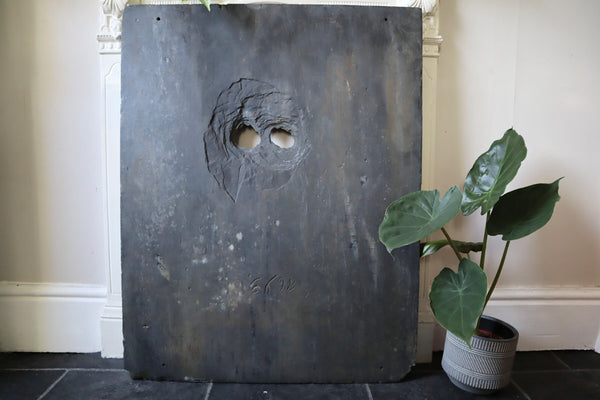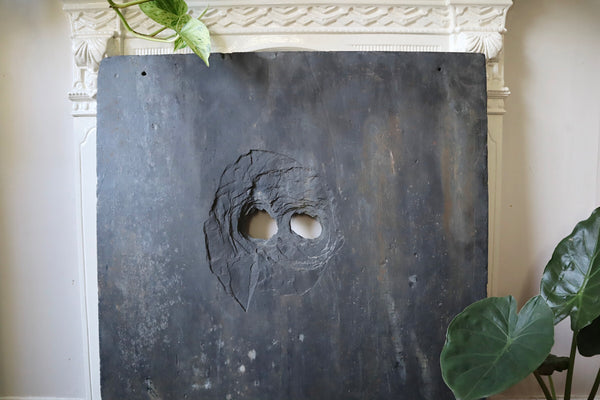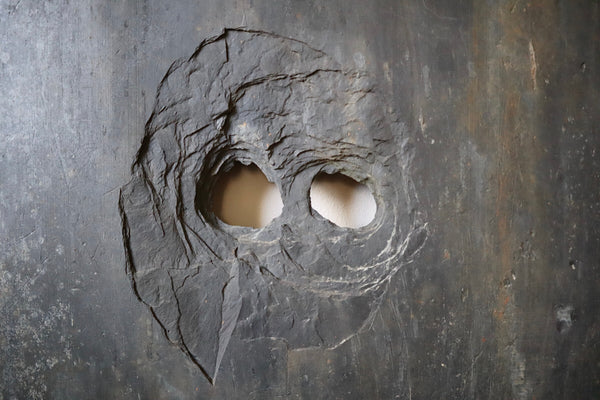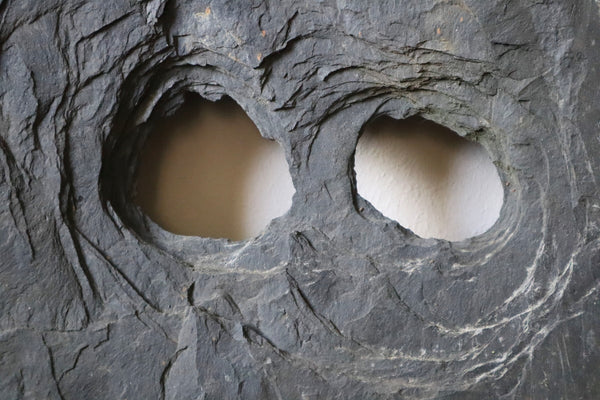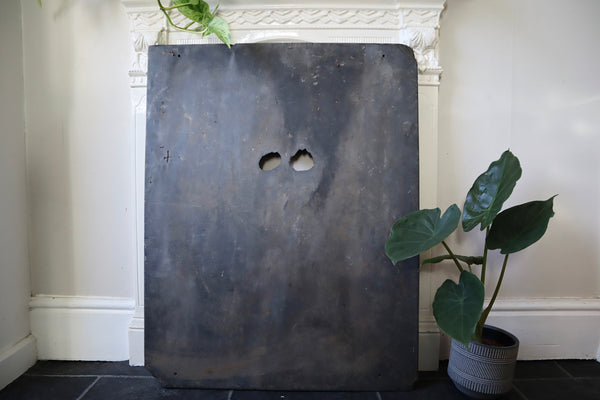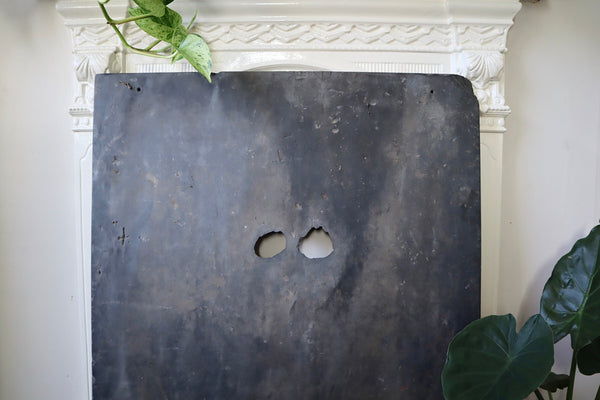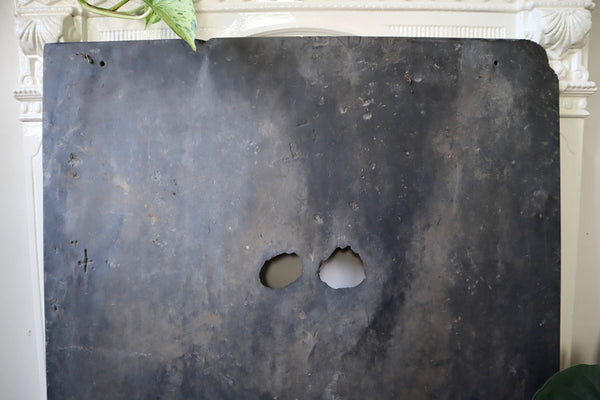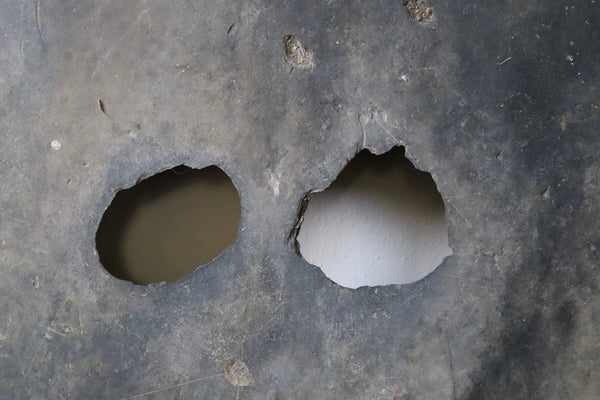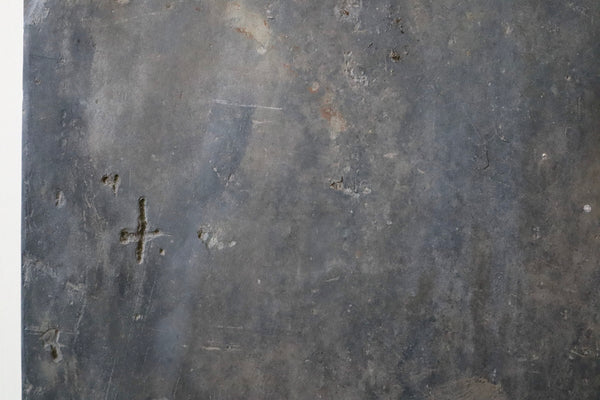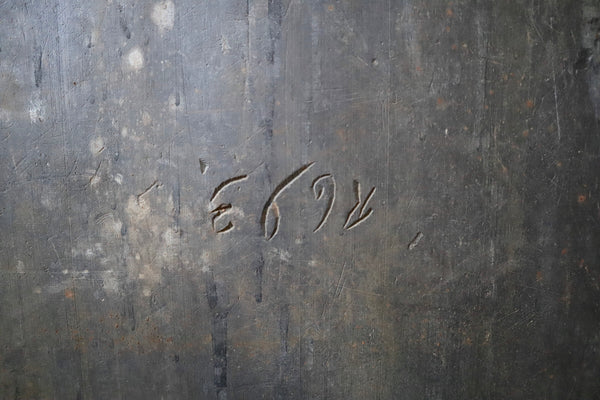**RESERVED** Antique Curiosity Slate Peephole Panel From Woodhall Estate Monastery Yorkshire
FREE UK & WORLDWIDE SHIPPING ON ALL ORDERS
An antique slate peephole panel recovered from Wood Hall estate in Linton, which consists of a Grade Two-listed Georgian mansion, out-houses and a monastery.
While the the monastery have been secretive about the purpose of the peepholes, they did disclose that it was discovered hidden behind a painting on the wall.
Wood Hall has a long and curious history. Although the present building was erected in 1750, the estate can he traced back to the eleventh century when its owner, Thane Arkil, resisted the forces of William the Conqueror - a move that inevitably led Wood Hall to fall into Norman hands. It stayed in the Vavasour family until the Civil War, when Cromwell destroyed the original building, dumping the rubble into the Wharfe.
The Vavasour family are an English Catholic family whose history dates back to Norman times. There are several branches of the family, some of whom have intermarried with other notable Catholic families, and are descended from William le Vavasour.
During the period when Catholics were persecuted by law, priest holes were commonly used as hiding places for priests and were built into many of the principal Catholic houses of England, Wales and Ireland. Many great houses had a priest hole built so that the presence of a priest could be concealed when searches were made of the building. They were concealed in walls, under floors, behind wainscoting and other locations and were often successful in concealing their occupant.
Could this have been part of a priest hole…? Or was there perhaps something more sinister going on…? We may never know…
What’s kept coming up in research is the link between the carving of ‘R693’ on the piece and a road in Kilkenny in Ireland. It seems to have been a bit of a hotbed of monasteries throughout history. More significantly, the road runs through a village called Freshford which appears to have some fascinating history and a monastery of its own.
Perhaps this piece has come from this area of Ireland originally, or perhaps the R693 was carved into the piece to advise any persons hiding behind it to escape to that safe area of Ireland in emergencies…?
There’s defo a lot more to this piece!
Condition is good, commensurate with age. Structurally sound. Some chips to edge.
Weighs: very very very heavy!!











